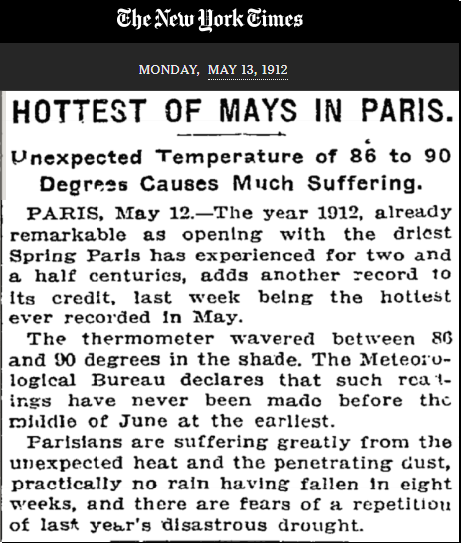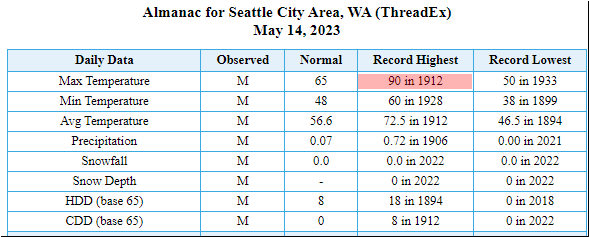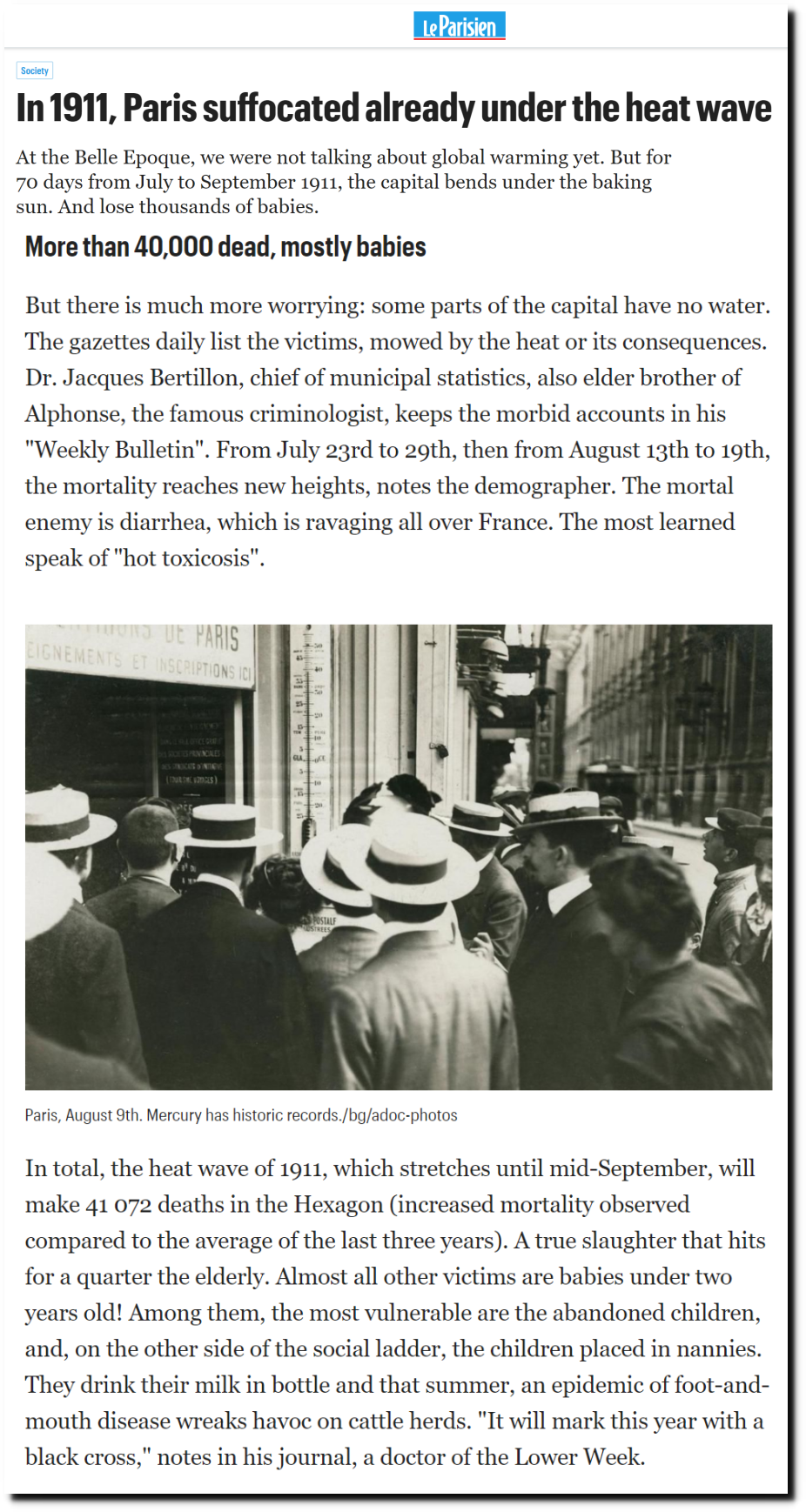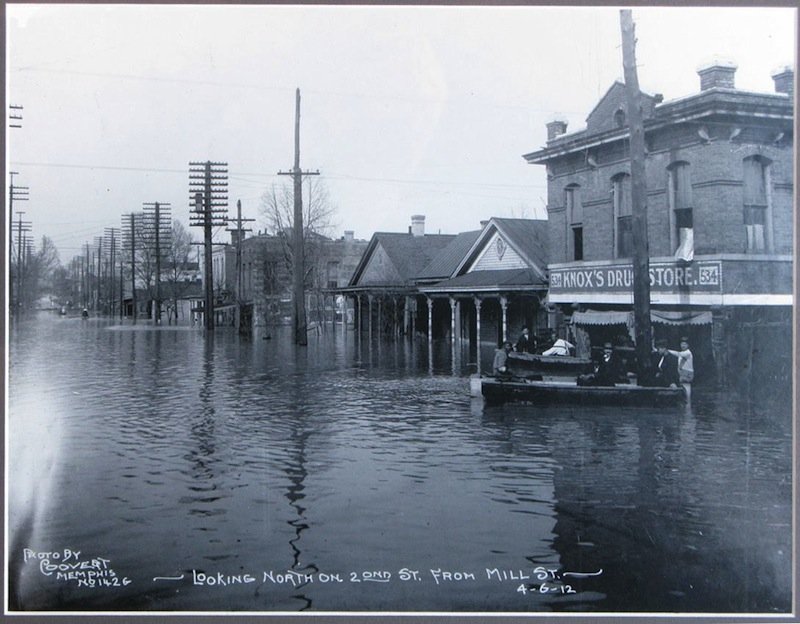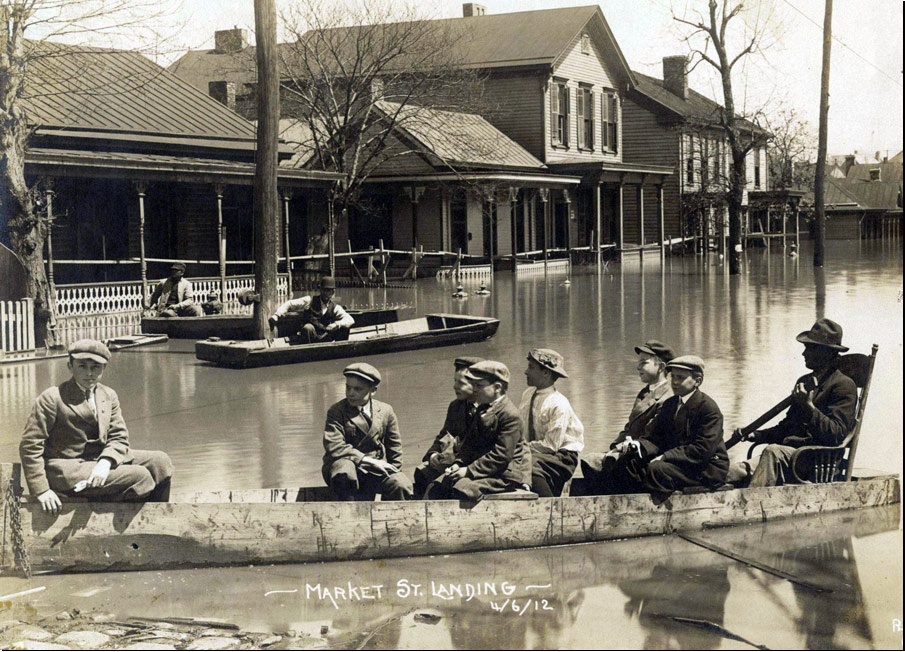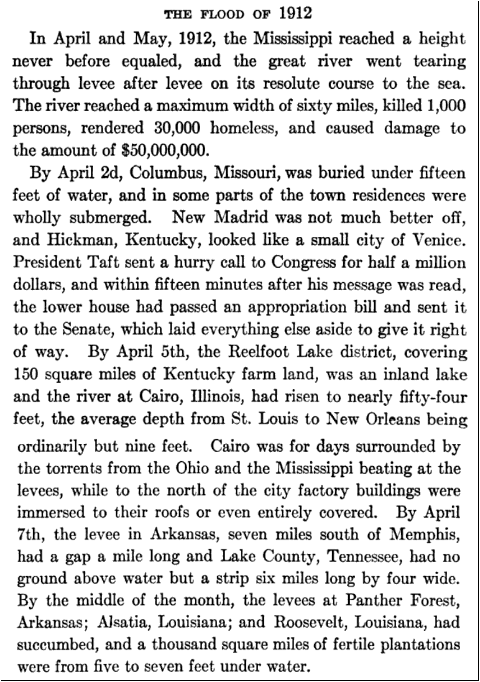“MONDAY, MAY 13, 1912
HOTTEST OF MAYS IN PARIS.
Unexpected Temperature of 86 to 90 Degrees Causes Much Suffering.
PARIS, May 12.—The year 1912, already remarkable as opening with the driest Spring Paris has experienced for two and a half centuries, adds another record to its credit, last week being the hottest ever recorded in May. The thermometer wavered between 86 and 90 degrees in the shade. The Meteorological Bureau declares that such readings have never been made before the middle of June at the earliest.
Parisians are suffering greatly from the unexpected heat and the penetrating dust, practically no rain having fallen in eight weeks, and there are fears of a repetition of last year’s disastrous drought.”
TimesMachine: May 13, 1912 – NYTimes.com
It was also record hot in Seattle.
h/t Don Penim
The heatwave and drought of 1911 killed more than 40,000 people in Paris.
En 1911, Paris suffoquait déjà sous la canicule – Le Parisien
“THE FLOOD OF 1912
In April and May, 1912, the Mississippi reached a height never before equaled, and the great river went tearing through levee after levee on its resolute course to the sea. ‘The river reached a maximum width of sixty miles, killed 1,000 persons, rendered 30,000 homeless, and caused damage to the amount of $50,000,000.
By April 2d, Columbus, Missouri, was buried under fifteen feet of water, and in some parts of the town residences were wholly submerged. New Madrid was not much better off, and Hickman, Kentucky, looked like a small city of Venice. President Taft sent a hurry call to Congress for half a million dollars, and within fifteen minutes after his message was read, the lower house had passed an appropriation bill and sent it to the Senate, which laid everything else aside to give it right of way. By April 5th, the Reelfoot Lake district, covering 150 square miles of Kentucky farm land, was an inland lake and the river at Cairo, Illinois, had risen to nearly fifty-four feet, the average depth from St. Louis to New Orleans being ordinarily but nine feet. Cairo was for days surrounded by the torrents from the Ohio and the Mississippi beating at the levees, while to the north of the city factory buildings were immersed to their roofs or even entirely covered. By April 7th, the levee in Arkansas, seven miles south of Memphis, had a gap a mile long and Lake County, Tennessee, had no ground above water but a strip six miles long by four wide. By the middle of the month, the levees at Panther Forest, Arkansas; Alsatia, Louisiana; and Roosevelt, Louisiana, had succumbed, and a thousand square miles of fertile plantations were from five to seven feet under water.”
The True Story of Our National Calamity of Flood, Fire and Tornado … – Google Books

